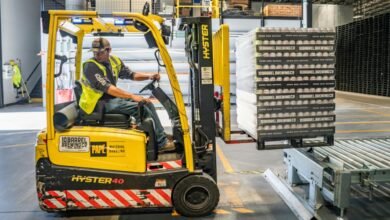Procurementnation.com Supply Chain Management: Fast Chain Model Explained

Introduction to Procurementnation.com
Procurementnation.com is a platform designed to streamline and optimize procurement and supply chain operations. It brings together businesses, suppliers, and buyers under one digital roof, offering tools, insights, and resources for efficient procurement. With its user-friendly interface and comprehensive features, Procurementnation.com is quickly becoming a crucial player in modern supply chain management. The platform is especially relevant for companies looking to stay ahead in fast-paced industries that require agility and speed in their supply chain processes.
In this blog, we’ll explore how Procurementnation.com supports businesses in adopting the Fast Chain Model and why this model is becoming a game-changer in industries with rapidly changing demand and market conditions.
What is Supply Chain Management?
At its core, Supply Chain Management (SCM) involves the management of the flow of goods, information, and services from the point of origin to the end customer. In simple terms, it’s about ensuring that products are made and delivered to the right place, at the right time, and in the right quantities. Effective supply chain management requires coordination among suppliers, manufacturers, wholesalers, retailers, and consumers.
SCM plays a vital role in the overall success of businesses by optimizing processes to reduce costs, improve product quality, and ensure timely delivery. As industries continue to evolve, businesses are increasingly looking for flexible and dynamic models to address fluctuating demand, which brings us to the Fast Chain Model—a strategy designed to tackle the challenges of fast-moving markets.
Understanding the Fast Chain Model
The Fast Chain Model is a supply chain strategy that focuses on speed, agility, and adaptability. It’s particularly suited for industries where consumer preferences change rapidly, and the demand for products is unpredictable. In these fast-paced markets, companies need a model that allows them to respond quickly, stay ahead of trends, and meet customer expectations without compromising on quality or cost.
Unlike traditional supply chains that focus on efficiency and cost-cutting over time, the Fast Chain Model prioritizes speed and quick decision-making. This means that companies must be prepared to ramp up production or distribution in response to sudden spikes in demand while minimizing the risks associated with overproduction or stockouts.
Key Features of the Fast Chain Model
The Fast Chain Model is characterized by several key features that differentiate it from traditional supply chain approaches. Let’s take a look at the most important ones:
Speed and Agility
In a Fast Chain Model, speed is paramount. Businesses need to be able to react to changing market conditions almost in real-time. Whether it’s responding to a sudden increase in demand or adapting to shifts in consumer preferences, agility is a critical aspect of this strategy.
Demand Forecasting
Accurate demand forecasting is essential in the Fast Chain Model. By predicting trends and consumer behaviors, companies can adjust their production and inventory strategies quickly. This reduces the likelihood of overstocking or running out of popular products.
Quick Inventory Turnover
To maintain a lean inventory while ensuring products are always available, the Fast Chain Model emphasizes rapid inventory turnover. This means products are moved in and out of the supply chain quickly, preventing excess stock that might become obsolete.
Flexible Manufacturing
The Fast Chain Model requires flexibility in manufacturing. Companies need to be able to scale production up or down quickly depending on market demand. This means having adaptable production processes, flexible suppliers, and a responsive workforce to handle sudden changes.
How Procurementnation.com Supports the Fast Chain Model
Procurementnation.com is an ideal platform for businesses that want to implement the Fast Chain Model. The website offers a range of tools that help businesses manage procurement, monitor supply chain activities, and improve overall operational efficiency.
Benefits of the Fast Chain Model in Supply Chain Management
Adopting the Fast Chain Model can bring numerous advantages to businesses:
Faster Response to Market Demand
The Fast Chain Model allows companies to respond more quickly to changing consumer demands. This helps businesses stay competitive by ensuring they always have the right products in stock, at the right time.
Reduced Stock Obsolescence
By focusing on quick inventory turnover and fast response times, companies can reduce the risk of having unsold products sitting in warehouses. This is especially important in industries where trends change rapidly, like fashion or technology.
Improved Customer Satisfaction
In today’s market, consumers expect fast and reliable delivery. The Fast Chain Model ensures that businesses can meet these expectations, resulting in higher customer satisfaction and loyalty.
Better Competitive Edge
Companies that adopt the Fast Chain Model can gain a significant edge over competitors by being more responsive, flexible, and faster to market. This can be a game-changer in industries where timing is everything.
Real-World Applications: Industries Using the Fast Chain Model
The Fast Chain Model is particularly effective in industries where trends and demand can change rapidly. Here are some examples of industries that thrive with this model:
- Fashion: The fashion industry requires quick response times to changing trends. The Fast Chain Model helps fashion companies deliver new collections to market quickly and avoid stockouts or overproduction.
- Electronics: In the tech world, new products are constantly being released, and consumer preferences shift quickly. The Fast Chain Model allows electronics companies to stay agile and meet the demands of an ever-changing market.
- FMCG (Fast-Moving Consumer Goods): Products like food, beverages, and household goods have short shelf lives and require a fast-moving supply chain. The Fast Chain Model helps FMCG companies manage their production and distribution processes to keep up with consumer demand.
Challenges of the Fast Chain Model
While the Fast Chain Model offers numerous benefits, it also comes with its own set of challenges:
Pressure on Suppliers
The need for speed and flexibility can put significant pressure on suppliers, who may struggle to keep up with constantly changing demands. Businesses need to build strong, reliable supplier relationships to avoid disruptions.
Risk of Overproduction
Because the Fast Chain Model requires quick decision-making, there’s a risk of overproduction if demand forecasting is inaccurate. This can lead to waste and excess inventory, negating some of the model’s benefits.
High Reliance on Accurate Data
To ensure success, the Fast Chain Model relies heavily on accurate data for forecasting and decision-making. If data is incorrect or outdated, it can lead to misaligned production plans and missed opportunities.
Future Trends in Fast Chain Supply Management
As supply chain technologies continue to evolve, several trends are emerging that will enhance the Fast Chain Model:
- AI Integration: Artificial Intelligence can help improve demand forecasting, optimize inventory management, and automate decision-making processes in real-time.
- Blockchain in Logistics: Blockchain technology can enhance transparency and traceability in the supply chain, making it easier for businesses to track products and ensure authenticity.
- Sustainability: As consumers become more eco-conscious, the Fast Chain Model will need to incorporate sustainable practices, such as reducing waste and adopting environmentally-friendly production methods.
Conclusion: Is the Fast Chain Model Right for Your Business?
The Fast Chain Model offers significant advantages for businesses in industries with rapidly changing demands and trends. However, it requires a level of agility, flexibility, and accurate data that may not be feasible for all businesses. If your business operates in an industry where speed and responsiveness are key to staying competitive, then adopting this model may be the right choice.





One Comment